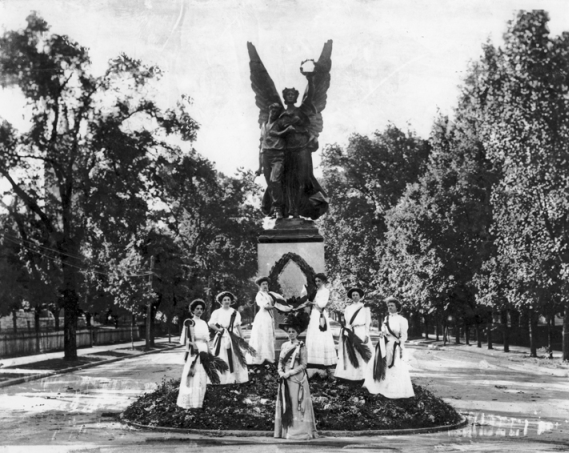Confederate Monuments
Confederate monuments began to appear in North Carolina and throughout the South almost simultaneously with the departure of the last of the Reconstruction government's occupation forces in the late 1870s. Confederate and state leaders and soldiers were recognized by means of statues, memorial plaques, buildings, and the naming of streets and parks, among other ways. The sites of battles and other places of historical importance were marked a little later; the whole movement reached a climax early in the twentieth century, as economic recovery made funds more plentiful, but it continued throughout the century.
In the beginning, the funding and building of Confederate monuments in the state was the work of monument committees and associations under the guidance of the Southern Monumental Association, the United Daughters of the Confederacy, and the United Confederate Veterans. Their efforts resulted in the raising of most of the monuments placed on courthouse lawns and around the State Capitol. With the passing of time this work was taken up by the Sons of Confederate Veterans, the Military Order of the Stars and Bars, and the Order of the Confederate Rose. The state legislature of North Carolina (and those of other states) also assisted in the funding of monuments at many national battlefield parks.
Capitol Square (officially called Union Square) in Raleigh is the location of some of the state's most widely recognized Confederate monuments. Erected in 1895 on the west side of the State Capitol at the head of Hillsborough Street is the tall, striking monument to all Confederates from North Carolina. A statue of Pvt. Henry Lawson Wyatt of the 1st North Carolina State Troops, the first Confederate soldier to give his life in the war, was completed in 1909. On the east lawn of the square is the statue of Zebulon B. Vance, brigadier general and one of three men who served as governor of the state during the war. On the southern lawn beside Morgan Street is the beautiful statue honoring the women of North Carolina at the time of the war.
Throughout the state are likenesses of Confederate soldiers portrayed in bronze and granite. Notable among them are those in Asheville, Chapel Hill, Goldsboro, Louisburg, New Bern, Salisbury, Smithfield, Warrenton, Washington, and Wilmington. Many of these monuments consist of a single armed soldier in granite atop a tall shaft, facing north as if to defend his home from invaders.
1 January 2006 | Davis, Charles C.
